
views
X
Trustworthy Source
American Cancer Society
Nonprofit devoted to promoting cancer research, education, and support
Go to source
Giving up a tobacco habit can be difficult, but the benefits you’ll receive in return are more than worth it.
Making a Plan
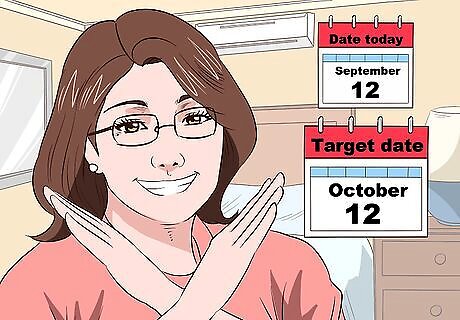
Set a date to quit. Picking a concrete quit date gives you time to prepare yourself emotionally and physically for the days ahead. Choose a date that is about a month away, that way you’ll have enough time to get ready but not so much that you’ll lose determination. Though you could try and quit cold turkey, people who have a set plan in place are far more likely to kick the habit and remain smoke-free.

Set up a schedule to help you quit. Base your schedule around how much tobacco you currently use, slowly narrowing down the quantity. Use a calendar to select intermediary dates based on your quit date for reducing your quantity over a period of time, allowing yourself to get used to using less and less. You may decide to reduce your consumption a little each week until you no longer use tobacco. For example, if you use 1 can per day, start by using 1 every 2 days. Then, the next week use 1 every 4 days. Continue reducing how much you use until you are barely using any by your quit date.

Write down your reasons for quitting. What is your reason, or combination of reasons, for wanting to kick your chewing tobacco habit? Writing down the personal factors motivating you to make this change can help clarify your sense of purpose, which will come in handy down the road when you're struggling with the urge to start chewing again. Some good reasons for quitting include: You won't have to deal with tobacco stains on your teeth and clothes. Your breath will smell better. Any sores inside your mouth will heal. You'll never have to worry about finding a can or bottle to use for tobacco juice. You won't have to duck out of meetings or gatherings to chew. You will save money that you once spent on tobacco.
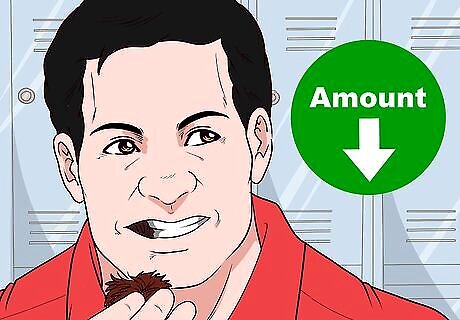
Start ramping down your tobacco use immediately. Cut down the amount of tobacco you use from the moment you decide to stop chewing, decreasing the amount gradually until your quit day arrives. The less nicotine that's in your system on your quit day, the better, because you'll already be used to chewing less and dealing with cravings. When you feel a craving, wait as long as possible before chewing.

Decide not to chew in certain settings. To help you cut down on tobacco use, make a list of specific places where you will not chew, such as work or school. Then, when you travel to these places, leave your dip at home to avoid temptation. By doing this, you will slowly get used to the feeling that tobacco is not always an option.

Figure out what your triggers are. Everyone has triggers that cause them to fall back on bad habits. Naming these triggers and eliminating them from your life will go a long way toward helping you quit chewing tobacco. Triggers can include things like seeing people you normally enjoy chewing around, encountering pleasurable sounds or smells you associate with chewing, or even just getting stressed out, scared, or anxious. Plan ways to address triggers with competing habits. For example, if you usually chew right after work, try replacing that with something else.

Stock up on chew alternatives. Fill your pantry with items like chewing gum, beef jerky, fruit chews, or fake dip. Many find that having something else to chew helps quell withdrawal cravings, making the quitting process far easier.

Get medicine to help you quit (optional). Ask your doctor about prescription drugs like varenicline and bupropion, which help people quit harmful habits over time, and nicotine patches, which help reduce physical withdrawal symptoms. So you have enough time to get the medicine, make an appointment well in advance of your quit date. If you decide to use a prescription medication, start taking it 1 or 2 weeks before you quit.
Quitting on Quit Day

Stop chewing tobacco on quit day. When quit day finally arrives, gather up all your willpower and force yourself to stop dipping. Your cravings will be intense, but remember that chewing your tobacco, or ingesting it in any other form, isn't an option. If you feel the urge to dip, reach for your chew alternatives instead. When you're having a hard time, read the statement you wrote describing your reasons for quitting. Remember what a good decision this is and how much it will pay off in the end.
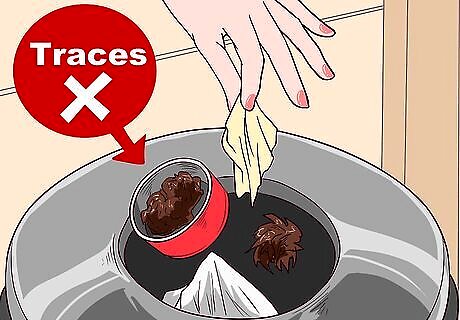
Throw away all traces of tobacco. Gather up any half-empty dip cans, stained clothing items, or tobacco memorabilia that may entice you to chew "just one more time." Toss it all out and make sure the trash gets collected as soon as possible. Then, give yourself a fresh start with new shirts, sheets, and other items that typically take on the smell of tobacco.
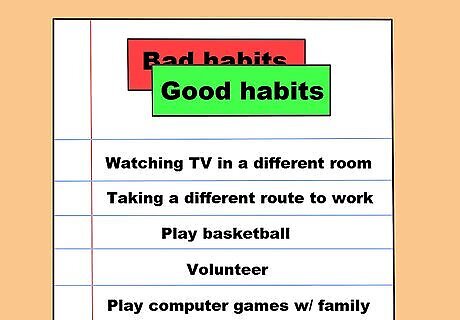
Change daily habits that remind you of dipping. Everyday activities like watching TV or driving to work may be linked to your desire to chew tobacco. Simple changes like watching TV in a different room or taking a different route to work can take your mind off chewing tobacco, as can trying out entirely new hobbies or activities. Fill your days with good habits that take up the time and energy you previously spent on chewing tobacco.
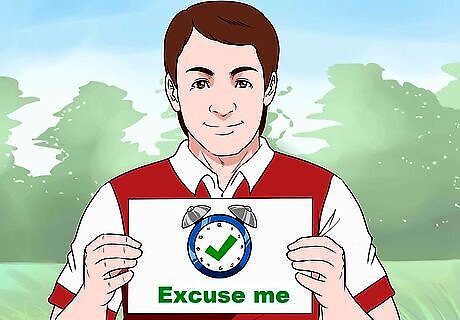
Give yourself alone time when you need it. Quitting tobacco can make you extremely short-tempered with your family, friends, and coworkers, especially in the first week or so. When you feel yourself heating up during a conversation, politely excuse yourself. People will understand, and in a few weeks you'll be back to normal.
Dealing with Withdrawal Symptoms

Remember that your withdrawal symptoms will end. While withdrawal is very unpleasant, it isn't forever. Most people only experience withdrawal symptoms for 5 to 7 days, so things will improve if you stay on track with your plan. Review your reasons for quitting to remind yourself why this is important.

Stay away from your tobacco triggers. Avoid spending time with people who dip, and stay away from places or events where you used to enjoy chewing tobacco. It's important, especially during the first few weeks, to protect yourself from these pitfalls. If you feel your resolve weaken as a result of an internal trigger, call a member of your support group or your therapist.

Join a support group to talk with people who understand your struggle. Nicotine Anonymous and other support groups give you the opportunity to talk about what you're going through with people who have been there. Consider joining one in your area, or meet with friends who used to chew tobacco and are willing to share their experience with you.
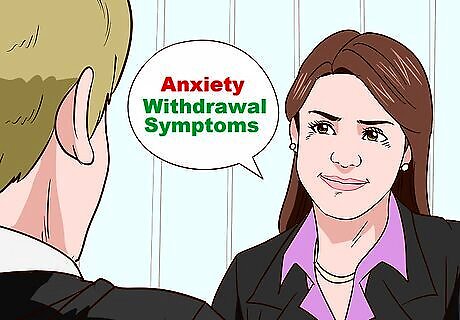
Talk to a therapist for help with anxiety and withdrawal symptoms. Search online for a local therapist that specializes in addiction. A therapist can help you work through the feelings of anticipation, excitement, and fear that come with making such a big decision. In addition, they can help you figure out a plan for getting through any withdrawal symptoms, which are as difficult emotionally as they are physically.

Don't give in to rationalizations. Rationalizations are harmful thoughts that will try to convince you to chew again. Recognize these thoughts for what they are and have a plan for getting past them. For example, if you think to yourself, "What's the harm in chewing just one more time?" recognize that the thought is not based on reality and grab a chew replacement. Some common rationalizations include: “You have to die of something.” "It's a free country." "I'm going to enjoy my life to the fullest."
Staying Tobacco-Free
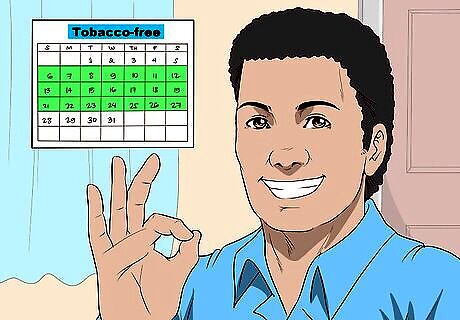
Keep up the habits that helped you quit. After 2 or 3 weeks, your intense physical cravings will subside. However, you'll still have to deal with other types of cravings, such as nicotine triggers and rationalizing thoughts. Continue using the methods that got you through the initial hump, and ditch the ones that didn't help. If necessary, talk about your struggles with family members, call your therapist, or visit the support group. Find hobbies to rely on. "This article gave me a very organized approach to quitting tobacco. Exercise and watching a great TV show help take my mind off smoking and give me positive reinforcement." - Jayesh M. Tea leaves can really help. "Today is my 4th day without tobacco and I've started getting excited to chew tobacco. This article taught me to chew on tea leaves instead, which has really helped with my withdrawal symptoms." - Nikhil G. We want to hear from you! Advice from our readers makes our articles better. If you have a story you’d like to share, tell us here.
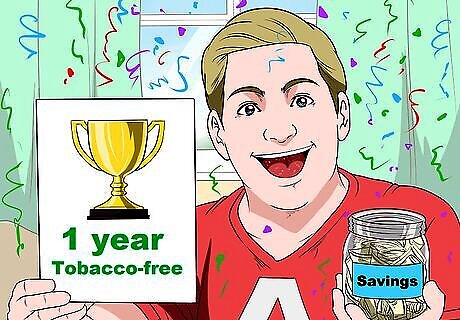
Celebrate your personal victories. Set quitting milestones like 2 weeks tobacco-free, 3 months tobacco-free, and 1 year tobacco-free. When those days come, celebrate each of them by using the money you saved on chewing tobacco to buy yourself a reward, go out to dinner, or take a trip. Quitting tobacco is hard work, and your accomplishments are worth celebrating!

Don't let a slip turn into a relapse. Slipping, or giving into the impulse to chew, is a common occurrence for former tobacco users. If you slip, assess why it happened and face down the trigger or rationalizing thought that’s at fault. Slipping doesn’t mean you failed, but it’s important to make sure that the slip doesn't turn into a relapse. Take slips seriously. Call your family, therapist, or support group to talk through what happened. Write down your thoughts and remind yourself why quitting tobacco is important. If you relapse, go back to the beginning. Think about what worked and what didn't, and try again. With a strong purpose and a solid plan, eventually you'll be able to kick this habit for good.















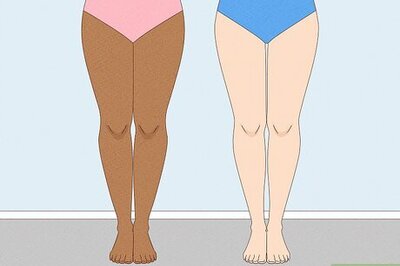




Comments
0 comment